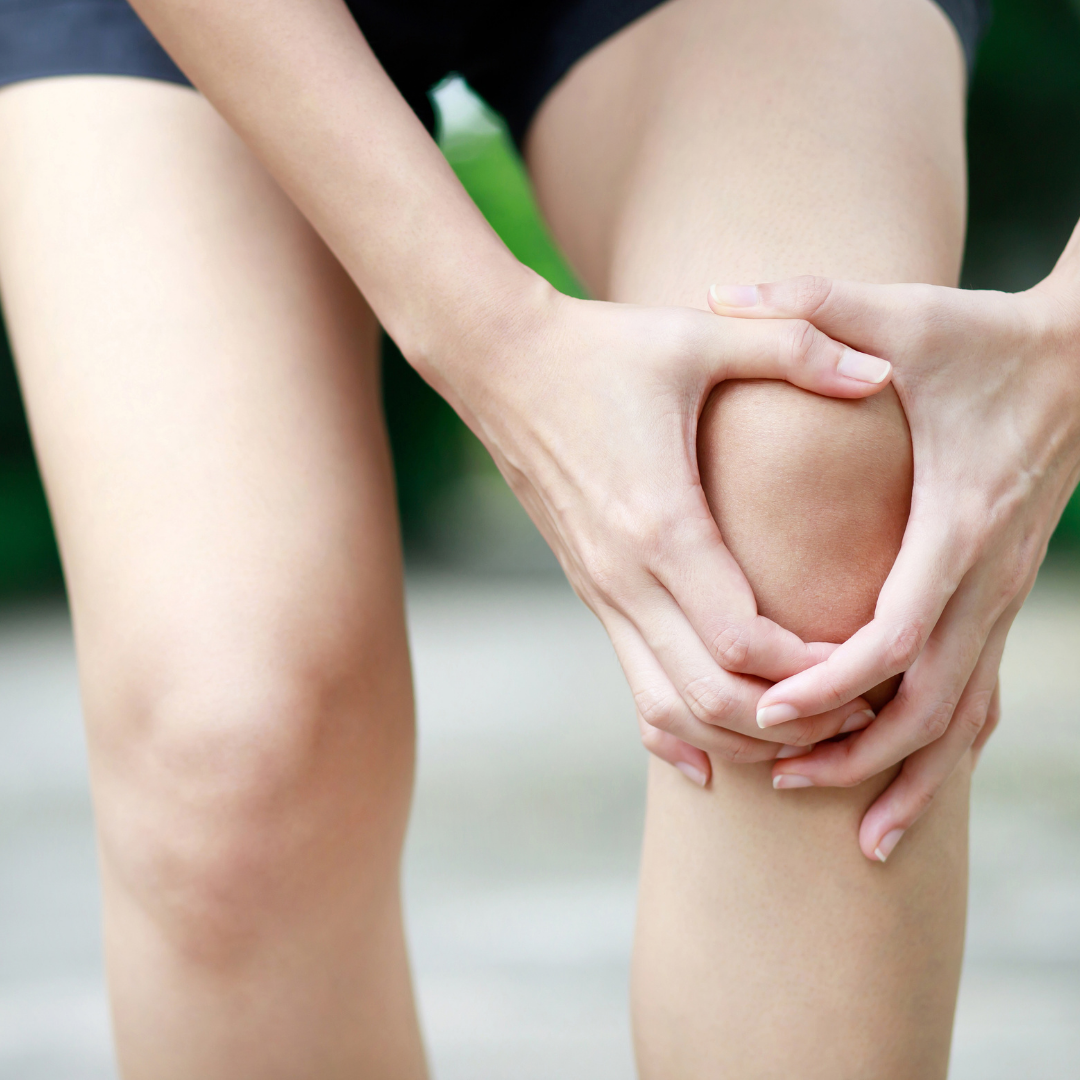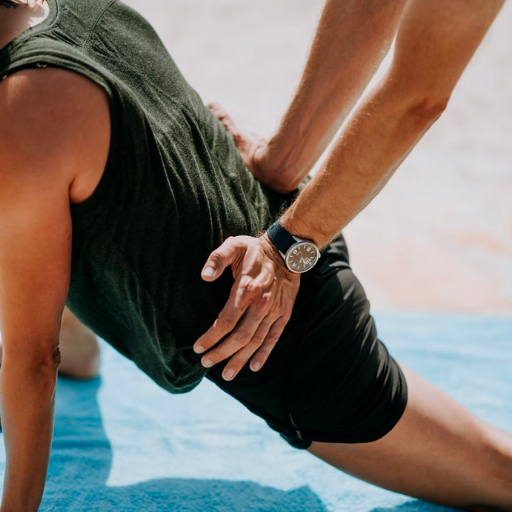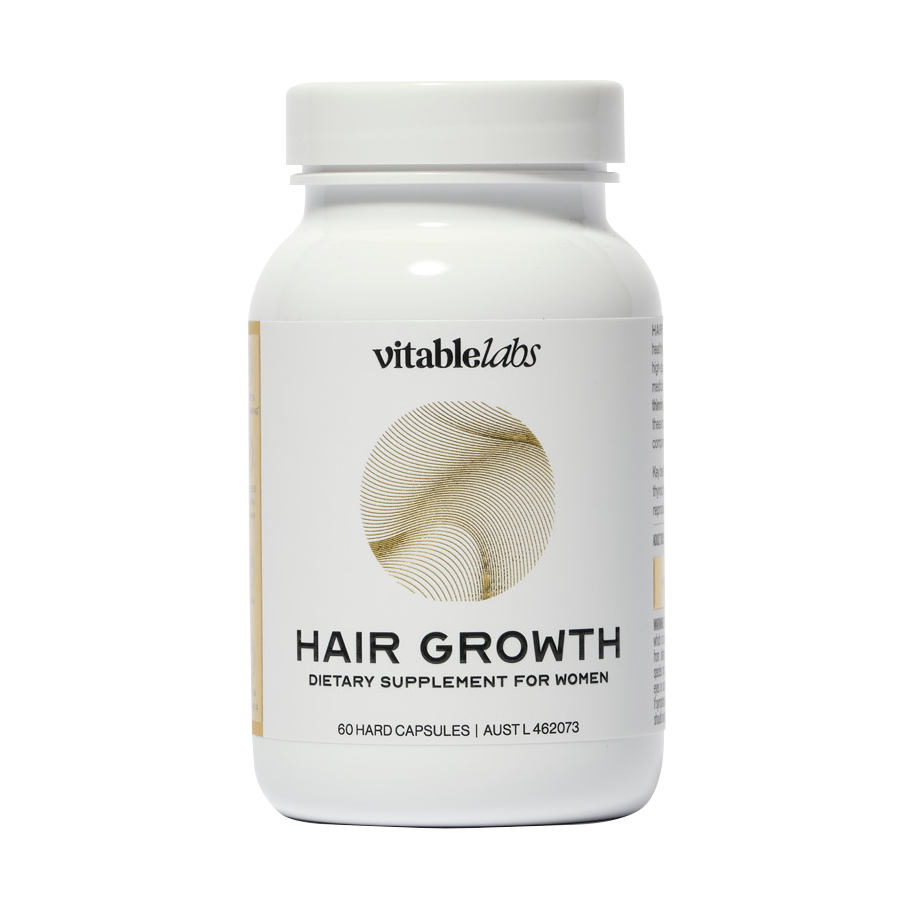Wellness Blog
The content on this blog is for general informational purposes only and is not a substitute for professional medical advice, diagnosis, or treatment. Always consult your healthcare provider before making changes to your health routine or taking new supplements.
Relieve joint pain and inflammation with natural remedies
Joint inflammation is a painful immune response to injury or infection.Our bodies constantly move, from working out to simple day-to-day activities, such as going to work or preparing a meal. Even the slightest of movements are an integral part of our everyday life, but we seldom think about them. That's why it can be interesting to look into how our bodies perform these tasks, and what makes them possible.The body is shaped by our skeleton, a framework made of bones that supports our weight and protects our organs (1). Our bones are then connected by our joints, the part of our body that allows movement and provides stability. With the exception of the bones in our throat, every bone in our body is connected to at least one bone at a joint (2).The more movement done through the joint, the higher the risk of sustaining joint injury (2). When a joint performs a greater range of action, the strength of the joint can be significantly reduced (2). Read on to find out more about joint pain and its natural remedies.Getting to know your jointsBefore we talk about the natural remedies for joint pain and inflammation, it's important to get to know how they work. There are three kinds of joints in our body: Synovial joints, or freely movable joints, can be found at the hip, shoulders, elbows, knees, wrists and ankles. These joints are linked by ligaments and are filled with synovial fluid, which lubricates the joints and helps them move easily (3). Cartilaginous joints, or partially movable joints, are found between the ribs, the sternum, the spine and the pelvis. These joints can perform little movements, and are linked by cartilage–providing the body with stability (3). Fibrous joints, or immovable joints, can be found in body parts such as the skull, our jawbones and our teeth. They are held together by connective fibrous tissues, allow no movement, and are integral to the body's stability (3). These joints make up and connect our skeletal system, giving the body both movement and stability. Taking care of our joints is vital in keeping our bodies active, healthy and productive. If you want to know more about joint pain and inflammation, read on.Are your joints overworked?Our joints allow us to do all the things we want to do. We use them everyday to run, walk, and jump. We use them to go to work, be with our family and hang out with our friends. Keeping them healthy helps maintain our quality of life.It's important to listen to your body and be in tune to its needs. Below are the possible causes of joint pain and inflammation to watch out for: Repeated use and/or wear and tear of muscles and joints Previous joint injuries you may have sustained Severe anxiety or stress Aging Weight issues Poor health (4) When it comes to joint pain, prevention is still better than cure (5). It's important to pay attention to our joint health long before we experience any pain or discomfort. If you are looking to know more about natural remedies for joint pain and inflammation, keep reading.Keeping your joints healthyProper joint care can help avoid issues that might arise as we age. These issues won't just affect our mobility, but our overall health (5). There are several lifestyle choices you can incorporate in your daily life when it comes to taking preventative care of your joints: Lead an active lifestyle. Regular exercise can help you maintain your body weight and relieve your joints of extra pressure. Exercise efficiently by observing proper form, and making sure to stretch and warm up before and after any strenuous physical activity (5). Listen to your body's cues and signals. Pay attention to your body before, during, and after exercise–take note of any pain or discomfort you experience. Your body will be the first to let you know if something is wrong and you're due to see a doctor (5). Quit smoking. Quitting smoking is one of the best remedies for joint pain and inflammation. Smoking causes inflammation that can exacerbate joint pain or discomfort (5). Strengthen your diet with fruits, vegetables and enough water. A nutritious diet can help keep your joints healthy and lower risk of inflammation. Giving your immune system a needed boost is an added layer of protection to your body (5). These natural remedies for joint pain and inflammation can also be amplified with supplements (4) that can provide the body with the vitamins and minerals it needs to stay healthy. Curious what these vitamins and minerals can be? Read on! Vitamins and minerals for joint healthBoosting your diet with nutritious foods targeted to improve joint health can help maintain it as well. Here are some nutrients you can consider:Vitamin CJoint health can be supported by taking Vitamin C, a water-soluble vitamin that the body cannot store. Vitamin C is integral in producing the body's collagen, the protein that makes up our skin, cartilages, tendons and ligaments (6). Fish OilFish oil is the dietary source of omega-3 fatty acids, which are essential for many of the body's functions, including cell growth and healthy muscle activity (7). Fish oil can be a natural remedy for joint pain and inflammation as its benefits include anti-inflammatory and antioxidant effects, boosting skeletal and muscular development in the body (8).CranberryCranberries contain bioactive compounds that have anti-inflammatory and antioxidant benefits (9) that can have therapeutic effects on stress and inflammation in the body (10). The phytochemicals found in cranberry supplements can help remedy joint pain and inflammation, plus improve overall cartilage health (10).CurcuminTurmeric's vibrant yellow color comes from curcumin, which has anti-inflammatory properties (11) that can help maintain joint health and alleviate joint pain (12).These vitamins and minerals can be a part of your natural remedies for joint pain and inflammation. Through Vitable, a multivitamin subscription in Australia, you can craft a tailored vitamin plan for your diet. Choose to live comfortably with the right vitamins and minerals to naturally remedy your joint pain or inflammation. Avail your own multivitamin packs and have them delivered straight to your doorstep!*Always read the label. Follow the directions for use. If symptoms persist, talk to your health professional. Vitamin and/or mineral supplements should not replace a balanced diet.References: Nemours Children's Health Content Team. “Bones, Muscles, and Joints”. Nemours Children's Health: Betterhealth.Vic.Gov.Au. Published February 18, 2016 on https://kidshealth.org/en/teens/bones-muscles-joints.html. Accessed January 8, 2022. Better Health Channel Content Team. “Joints”. Better Health Channel: . Published May 31, 2012 on https://www.betterhealth.vic.gov.au/health/conditionsandtreatments/joints. Accessed January 8, 2022. Kids' Health Content Team. “Bones, Muscles, and Joints”. Kids' Health: KidsHealth.Org. Published February 18, 2016 on https://kidshealth.org/en/teens/bones-muscles-joints.html. Accessed January 16, 2022. Cleveland Clinic Content Team. “Joint pain”. Cleveland Clinic: My.Clevelandclinic.Org. Published March 28, 2018 on https://my.clevelandclinic.org/health/symptoms/17752-joint-pain. Accessed January 16, 2022. Cleveland Clinic Content Team. “5 Best Ways to Safeguard Your Joints as You Age”. Cleveland Clinic: Health.Clevelandclinic.Org. Published July 13, 2020 on https://health.clevelandclinic.org/5-best-ways-to-safeguard-your-joints-as-you-age/. Accessed January 16, 2022. Mount Sinai Content Team. “Vitamin C (Ascorbic Acid)”. Icahn School of Medicine at Mount Sinai: Mountsinai.Org. Published on https://www.mountsinai.org/health-library/supplement/vitamin-c-ascorbic-acid. Accessed January 16, 2022. Mayo Clinic Content Team. “Fish oil”. Mayo Foundation for Medical Education and Research: Mayoclinic.Org. Published December 8, 2020 on https://www.mayoclinic.org/drugs-supplements-fish-oil/art-20364810. Accessed January 16, 2022. Gammone, M., Riccioni, G., Parrinello, G., & D'Orazio, N. “Omega-3 Polyunsaturated Fatty Acids: Benefits and Endpoints in Sport”. US National Library of Medicine National Institutes of Health: Nih.Gov. Published December 27, 2008 on https://www.ncbi.nlm.nih.gov/pmc/articles/PMC6357022/. Accessed January 16, 2022. Thimóteo, N. S. B., Iryioda, T. M. V., Alfieri, D. F., Rego, B. E. F., Scavuzzi, B. M., Fatel, E., Lozovoy, M. A. B., Simão, A. N. C., & Dichi, I. “Cranberry juice decreases disease activity in women with rheumatoid arthritis”. National LIbrary of Medicine: PubMed.Org. Published October 10, 2018 on https://pubmed.ncbi.nlm.nih.gov/30553231/. Accessed January 16, 2022. Basu, A., Schell, J., & Scofield, R. H. “Dietary fruits and arthritis”. US National Library of Medicine National Institutes of Health: Nih.Gov. Published January 24, 2019 on https://www.ncbi.nlm.nih.gov/pmc/articles/PMC5788027/. Accessed January 16, 2022. Hewlings, S., & Kalman, D. “Curcumin: A Review of Its Effects on Human Health”. US National Library of Medicine National Institutes of Health: Nih.Gov. Published October 22, 2017 on https://www.ncbi.nlm.nih.gov/pmc/articles/PMC5664031/. Accessed January 16, 2022. Daily, J. W., Yang, M., & Park, S. (2016). “Efficacy of Turmeric Extracts and Curcumin for Alleviating the Symptoms of Joint Arthritis: A Systematic Review and Meta-Analysis of Randomized Clinical Trials”. US National Library of Medicine National Institutes of Health: Nih.Gov. Published August 1, 2016 on https://www.ncbi.nlm.nih.gov/pmc/articles/PMC5003001/. Accessed January 16, 2022
Learn moreWhat is runner's knee? How to prevent joint pain while running
Running is one of the most popular physical activities favored by Australians. It's simple, effective at burning calories and maintaining overall fitness and gives many people a chance to enjoy the outdoors. However, the exercise does not come without consequences. Regular running can put repeated stress on the knee joint and over time, this wear and tear can result in a joint condition aptly termed runner's knee. Without realizing it, you may have already dealt with runner's knee symptoms in the past and may now be asking yourself, what is runner's knee, exactly? This article answers the question by providing information on the common condition afflicting running aficionados, regardless of level of expertise. It can be a difficult condition to treat if not addressed properly and in a timely manner, so for all those hoping to keep running as their regular exercise, read on. The basics of runner's kneeRunner's knee is more formally known as patellofemoral pain syndrome (PFPS). It is a condition marked by pain under or around the patella or kneecap, the point where the knee connects with the lower end of the thigh bone. Those who have suffered from runner's knee symptoms have described the pain as a dull and persistent ache in the affected knee that is not relieved by rest mid-exercise or going on prolonged running breaks. Other runner's knee symptoms include feeling stress while bending the joint, cracking or popping sounds at the kneecap, and discomfort after sitting with bent knees (1). Causes of runner's kneeGetting the answers to the question of what is runner's knee could lead to further inquiries about what causes the joint condition especially for those that have running as their main form of exercise.The exact cause of runner's knee has yet to be determined, although several factors may make a person more susceptible to developing the condition. Joint overuse is a leading factor as mentioned above; exercises that make the knees work harder than usual, such as running, jumping, squatting, or lunging, are the top contributors to this (1). Runner's knee can also occur because of structural defects that result in muscle imbalances or weaknesses; there are some people who may have simply been born with congenital defects that have affected their knees or legs (1). It also could be caused due to the natural development of the muscles or bones in this area to result in muscle imbalances (1). Finally, individuals who have sustained a previous knee injury or have undergone knee surgery are also at risk of developing runner's knee. These knees are less resilient to physical stress and able to handle some forms of exercise, so should be taken care of. While anyone can develop runner's knee, the condition tends to occur more frequently in females and in fact, women are twice as likely as men to be diagnosed with runner's knee (1). The common condition is also not exclusive to runners as its name would suggest, but can affect anyone who do vigorous exercise regularly (1). What is runner's knee and what can I do to alleviate runner's knee symptoms? For minor cases of runner's knee symptoms that most frequently manifest as pain, the best course of action is rest. Give your knees time to recover and put off running in the meantime.The RICE method of rest, ice, compression, and elevation is useful for runner's knee.¹ Refrain from putting any weight on the knee and apply cold packs for 15 minutes at a time several times throughout the day on the affected knee or knees. You can also wrap a compression bandage around the knee joint, making sure to leave an opening over the kneecap. Lastly, for elevation, rest with the knee elevated on a surface that is higher than your heart (1). However, if you find that your runner's knee symptoms are not responding well or at all to home remedies, it's best to get help from a doctor. Medical attention for persistent or worsening cases is necessary because further injury may occur. At the doctor's office, you may be asked to do diagnostic imaging tests to ascertain the damage and rule out other causes of suspected runner's knee. Other joint or muscle issues may be misdiagnosed as runner's knee, so it is important to get an accurate account of what is causing pain or discomfort in your knees.What is runner's knee and how is it treated?Depending on results on the kinds of tests your doctor will recommend you undergo, treatment plans will vary. A treatment plan may include pain medications to help you manage runner's knee symptoms. Always purchase pain medication prescribed by a doctor and take only the recommended dosage. Do not self-medicate. If you feel that the kind of medication or dosage is not right for you, consult with your doctor before making any changes.Physical therapy is another regular component of a treatment plan for runner's knee symptoms (2). During physical therapy, a licensed physical therapist will demonstrate specific exercises to strengthen the knee during a session, and can sometimes also teach you how to do these exercises on your own if necessary. Physical therapy helps you achieve regular and controlled movement in targeted muscle areas which can help you regain strength, endurance, and range of motion in the knee. For those who wish to keep their exercise regimen despite the risk of runner's knee, your physical therapist can also spot and correct errors in your form and technique, and dispense useful advice to prevent re-injury. In some cases, your doctor may further consider orthotics. Orthotics are shoe inserts that can help improve foot and ankle alignment. When your lower extremities are better aligned, it can take some stress off the knee. Orthotic devices can be bought off-the-shelf or customized to the contours of your feet. Make sure to talk with your doctor about the appropriateness of this option.What is runner's knee and what supplements can I take to strengthen knee joints?In addition to working with doctors and therapists, you may also want to consider taking vitamin and mineral supplements as a preventive measure against runner's knee symptoms and for improving overall joint health. Supplements can optimize the effects of your healthy choices and provide your joints with added stability and strength. These are the supplements you may want to look out for: Vitamin CVitamin C or ascorbic acid is a water-soluble nutrient. While it is best known for its beneficial effects on the immune system, vitamin C can also support joint and cartilage health through its role in collagen synthesis. Collagen is the building block of bones, muscles, tendons, and cartilage. It accounts for about 60% of cartilage, a connective tissue coating the joints, including your knees (3). The cartilage plays an important role as a shock absorber during movement, so a breakdown in collagen could result in joint problems down the line. Vitamin C also contributes to connective tissue health and healing of connective tissue injuries that can occur during exercise such as running. Vitable Australia's Vitamin C Plus is paired with rosehip extract for an antioxidant-rich blend. Our supplement is specially formulated to support not only collagen formation but also immune system function, energy levels, and brain function. Fish oilFish oil are oils derived from the tissue of fatty fish like salmon, mackerel, and herring. These oils contain omega-3, a type of polyunsaturated fat that reduces the risk of cardiovascular disease and stroke as fish oils have powerful anti-inflammatory effects (4). A study suggests that fish oil may have the potential to relieve knee pain caused by osteoarthritis (4). In vitro studies indicate that fish oil decreases inflammation-induced destruction of tissue in cartilage harvested during surgery. Moreover, it has the potential to ease knee pain by improving microvascular function (4).Vitable's fish oil supplement is a concentrated blend of naturally derived omega-3-fatty acids that exerts anti-inflammatory effects.CranberryWhile cranberries are traditionally used to treat other conditions unrelated to runner's knee symptoms, their high Vitamin C content makes them candidates in maintaining cartilage, bone, and connective tissue strength and formation. More so, a study has suggested that cranberry juice decreases disease activity in female patients with osteoarthritis, although the exact mechanism has yet to be determined (5).CurcuminCurcumin is the active component of turmeric. Aside from giving flavour to food or drink, curcumin has potent anti-inflammatory effects. It suppresses inflammation through several mechanisms, making curcumin an ideal supplement for improving mild joint pain and reducing swelling healthily and quickly. At Vitable, our curcumin supplement is blended with black pepper to enhance body absorption and ease joint pain and swelling. Now that you are more informed about runner's knee, its causes and prevention, you are in a much better position to take action and prevent knee pain. If you're looking for supplements to improve joint health, consider Vitable. We offer a monthly vitamin subscription where you can mix and match our daily vitamin packs depending on your needs and health goals. We even take care of vitamin delivery for your ultimate convenience. Browse through our offerings today and invest only in the supplements you need to ensure that you live healthily and happily beginning today.*Always read the label. Follow the directions for use. If symptoms persist, talk to your health professional. Vitamin and/or mineral supplements should not replace a balanced diet.References: Mayo Clinic. Patellofemoral pain syndrome. https://www.mayoclinic.org/diseases-conditions/patellofemoral-pain-syndrome/symptoms-causes/syc-20350792 Cleveland Clinic. Patellofemoral Pain Syndrome (PFPS). https://my.clevelandclinic.org/health/diseases/17914-patellofemoral-pain-syndrome-pfps Harvard School of Public Health. Collagen. https://www.hsph.harvard.edu/nutritionsource/collagen/ National Institute of Health. (2020). Fish oil supplementation reduces osteoarthritis-specific pain in older adults with overweight/obesity. https://www.ncbi.nlm.nih.gov/pmc/articles/PMC7494084/ National Library of Medicine. (2018). Cranberry juice decreases disease activity in women with rheumatoid arthritis. https://pubmed.ncbi.nlm.nih.gov/30553231/
Learn more





